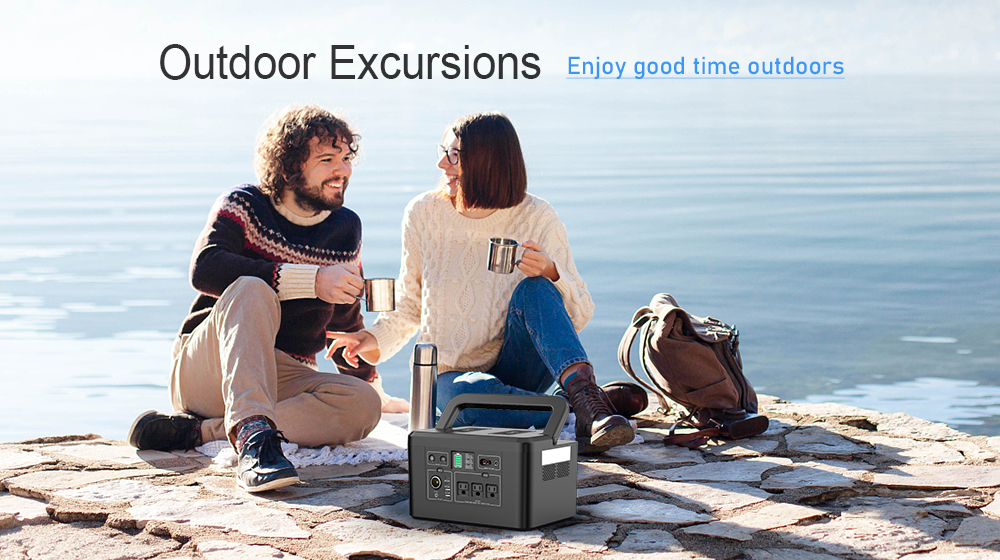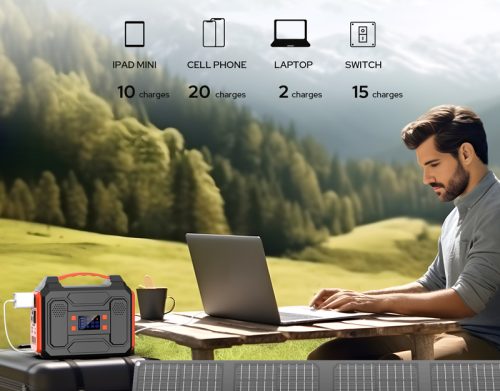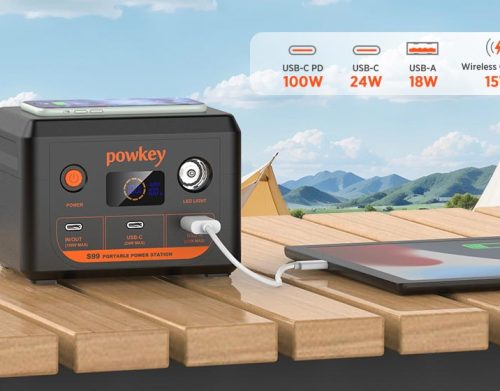Modern camping is no longer merely a return to nature, but an opportunity to enjoy the great outdoors without sacrificing the comforts and conveniences of home. A reliable portable power station allows you to savour chilled drinks, hot meals, bright lighting, and even outdoor movie nights in the wilderness.
How to Choose a Portable Power Station for Camping
Before selecting a power station, consider these key factors:
– Capacity (Wh): Determines how much energy the power station can store; higher values mean longer runtime. For light use (phone charging, small lights), opt for 300-500Wh; if using cooking appliances like rice cookers or electric grills, choose 500-1000Wh; For high-power appliances like induction hobs or microwaves, or extended camping trips, opt for 1000Wh or higher, potentially considering models with expandable capacity.
– Output Power (W): Determines the maximum power output for connected devices. Approximately 500W suffices for small electric heaters and fans; 1000W-1800W supports rice cookers and electric grills; to power induction hobs or hairdryers, 2000W and above is required. Some products feature power boost modes (e.g., BLUETTI AC180’s 2700W surge mode).
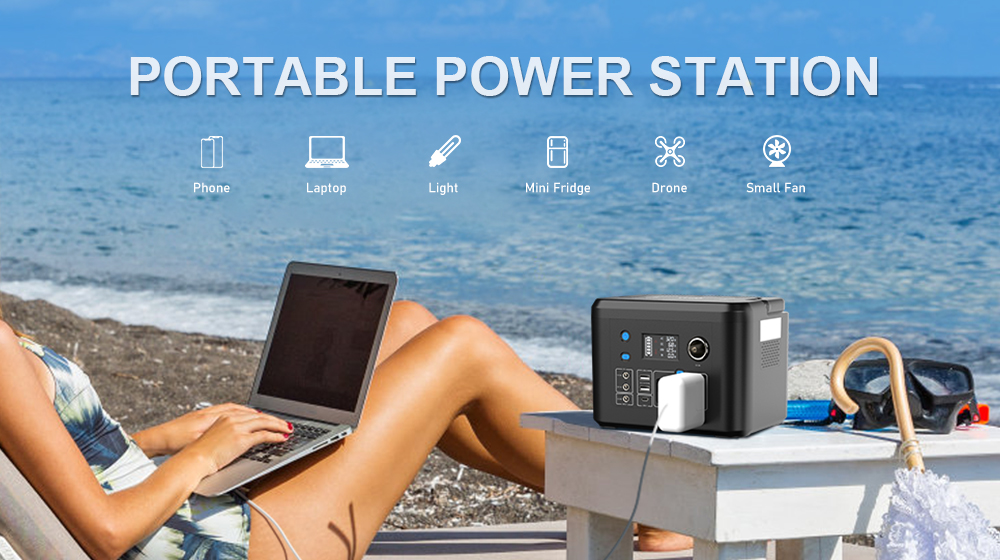
– Port Diversity: A wide array of output interfaces is essential, including AC outlets, USB-A ports, USB-C ports (preferably with PD fast charging support), and car charging ports (DC). The ability to power more devices simultaneously is advantageous.
– Charging Methods and Speed: Mains charging is fundamental. Solar panel charging capability is vital for extended camping trips. Some models support vehicle fast charging (e.g., DJI Power 1000 V2 charges 1kWh in approximately 78 minutes). Mains fast-charging speed is also noteworthy; for instance, the EcoFlow RIVER 2 Pro reaches 98% charge in about 60 minutes.
– Portability: Weight and dimensions directly impact ease of transport. Units under 5kg are highly portable; those between 5-10kg require consideration of carrying methods; while models over 10kg are better suited for vehicle-based camping sites.
– Safety and Durability: Lithium iron phosphate (LiFePO₄) cells offer enhanced safety and extended lifespan (e.g., the BLUETTI AC180 maintains 80% capacity after 4,000 cycles). Essential features include overload, overheat, and short-circuit protection. Housing materials (e.g., flame-retardant) and waterproof/dustproof ratings (e.g., IP65) ensure resilience in harsh conditions.
Top Portable Power Station Recommendations
| Feature Dimensions | Powkey R1000 | BLUETTI AC180 | EcoFlow RIVER 2 Pro | ORICO 500W | YOOBAO EN300 |
|---|---|---|---|---|---|
| Capacity | 729.6Wh | 1152Wh | 768Wh | 533.5Wh | 230Wh |
| Rated AC output power | 1000W | 1800W | 800W | 500W | 300W |
| Distinctive Features | Dual wireless charging, fast charging | Smart app control, UPS functionality (20ms switching) | Mains rapid charging (approximately 60 minutes to full charge) | Integrated LED lighting and SOS distress signal | Ultra-lightweight (3.1kg), lithium iron phosphate battery cells |
| Recommended camping scenarios | Glamping, motorhome travel, group long-distance camping, family emergency preparedness | Family camping, emergency backup, short trips | Weekend camping for 2-3 people, car camping | Self-drive camping, weekend picnics | Daytime picnics, solo or duo lightweight camping, digital device charging station |
| Price | Mid-to-high-end | High-end | Mid-range | Mid-range | Entry-level to mid-range |
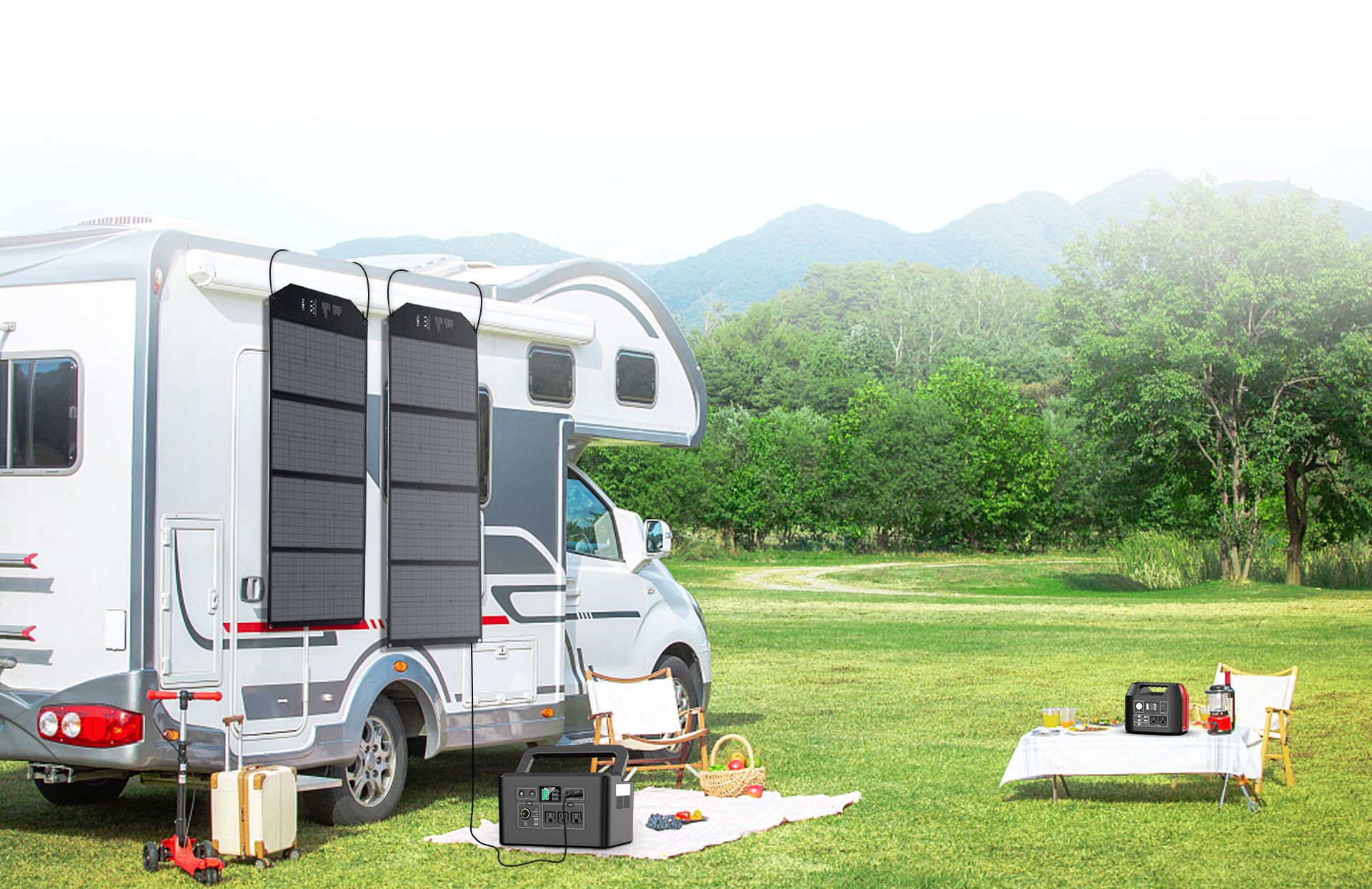
Camping Power Safety Tips
While enjoying convenience, safety must always come first:
– Read the manual: Thoroughly review the product handbook before use to understand all features and limitations.
– Position correctly: Place the power station on a flat, stable, well-ventilated surface, away from heat sources, open flames, and damp conditions. Ensure ventilation ports remain unobstructed during operation.
– Power Matching: Never exceed the device’s rated output power to prevent damage or hazards from overloading. Calculate total power when using multiple appliances simultaneously.
– Weather Awareness: While many power stations offer some protection, avoid outdoor use in rain or snow whenever possible.
– Charging Safety: Use only original or certified chargers. During solar charging, ensure wiring is secure and prevent tripping hazards.
– Proper Storage: When not in use, store in a dry, cool place with a moderate charge level maintained.
Conclusion
Selecting a suitable portable power station can significantly enhance camping comfort and enjoyment, allowing you to experience home-like convenience amidst nature. Whether you’re an ultralight backpacker or a glamping enthusiast prioritising comfort, there’s a power station to meet your needs.
May this guide assist you in finding your ideal outdoor energy companion, illuminating your next wilderness adventure.
